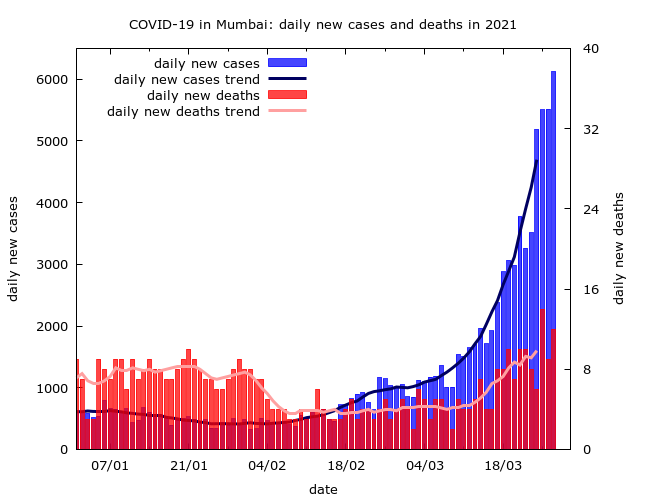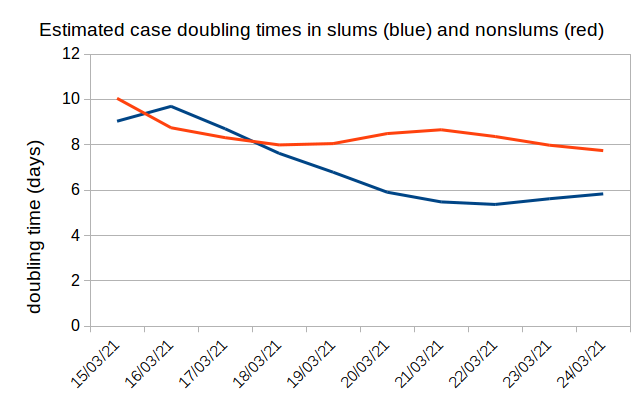
When commenting for this piece by @soutikBBC, here are some things I noticed.
(1/4) Almost all regions are showing rapid exponential growth in cases at the same time.
(2/4) Places badly hit earlier (sometimes more than once) are being badly hit again.
(1/4) Almost all regions are showing rapid exponential growth in cases at the same time.
(2/4) Places badly hit earlier (sometimes more than once) are being badly hit again.
https://twitter.com/soutikBBC/status/1378894501243064322
(3/4) At the moment, there is no reason to believe that deaths are rising more slowly than expected from the rise in cases- when you take delays into account. Optimism is good, but not misplaced optimism. 

(4/4) In districtwise data from @covid19indiaorg you often see the great majority of districts in a state surging together. This is clearest in log plots of recent data: Andhra Pradesh, Maharashtra, Gujarat and Punjab shown. (4 more districts in the next tweet.) 







(4/4) Districtwise data from Madhya Pradesh, Karnataka, Haryana and Uttar Pradesh.
I think knowing where this second surge is going will take some time. True, there is more experience now & vaccination. But also fatigue at restrictions, and the need to earn a living.



I think knowing where this second surge is going will take some time. True, there is more experience now & vaccination. But also fatigue at restrictions, and the need to earn a living.




• • •
Missing some Tweet in this thread? You can try to
force a refresh










